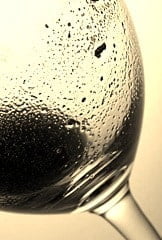 Sediment
Sediment
That gritty-stuff resting at the bottom of some wine bottles shouldn’t really be viewed as a true wine fault.
Let’s go back to science class for a minute: Sediment comes about when naturally occurring tannins in a wine polymerize (cling together), making them larger and therefore more visible. This is a good indication that the acids and flavors of a wine have started to change and mellow out a little more. For this reason sediment can be viewed as a good thing!
The interesting point about sediment is that there’s very few firm guarantees as to where you will or will not find it. I’ve personally had 3 year old wines that threw a sediment, and 10 year old ones that didn’t.
How to tell if your wine is affected:
Check-out the picture above. That’s what it looks like. Sometimes if you hold a bottle up-to the light you may be able to see it, but most of the time it will just be a “nice little surprise” for the last person to pour a glass. Serves them right for taking the last glass!
Your course of action:
Sediment is completely harmless, although it doesn’t taste too great. Some wineries choose to put their wines through a process to prevent/limit the development of sediment, as drinkers often mistake it for a fault. Pour it slowly, or decant.
Click here for the rest of my —-> A Guide to Wine Faults posts.


Poly_chem
Actually, those little “gritty” particles shown in your picture are tartrate crystals, not polymerized tannins.
Kris Chislett
On second observation you’re probably right. Hard to tell with a black and white image.